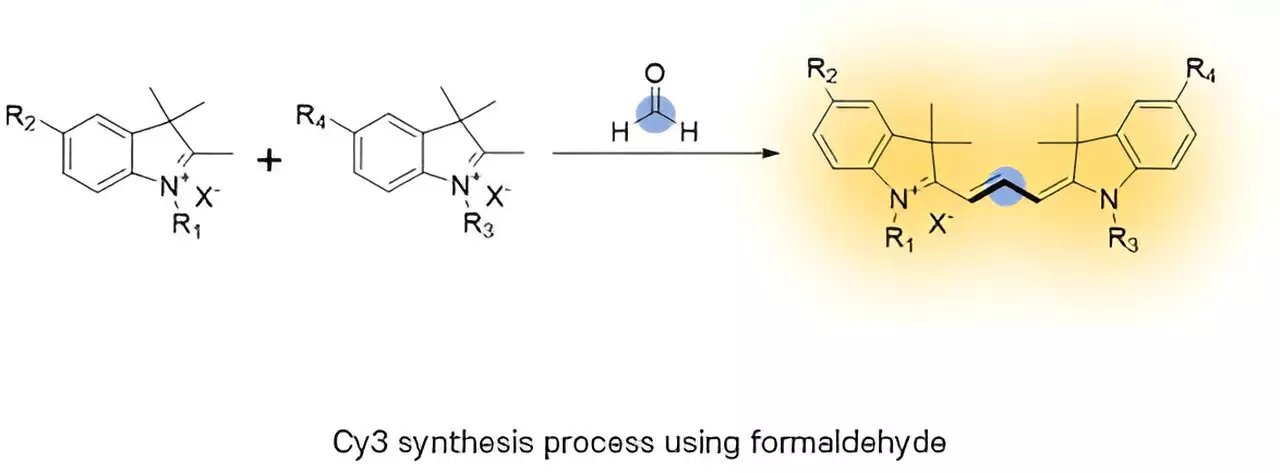Organic fluorophores have become indispensable in various fields such as medicine and biology. These compounds possess the unique property of fluorescing, allowing them to absorb light at specific wavelengths and re-emit it. They play a pivotal role in applications ranging from medical diagnostics to bioimaging techniques, including tracking cancer cells and conducting genetic analyses. Among these compounds, trimethine cyanine (Cy3) stands out for its widespread utilization. However, the traditional synthesis methods for Cy3 involve intricate processes that often yield unwanted byproducts, thereby inhibiting atom efficiency and escalating production costs.
A recent study published in Angewandte Chemie International Edition has unveiled a groundbreaking approach to synthesizing Cy3. Conducted by a research team led by Professor Young-Tae Chang and Dr. Sun Hyeok Lee from POSTECH, the study presents a method that leverages the simplicity of formaldehyde—a small molecule composed of just one carbon atom, two hydrogen atoms, and one oxygen atom. By substituting formaldehyde for the complex, high-molecular-weight compounds typically used in Cy3 synthesis, the researchers have achieved a significant improvement in atom efficiency.
This innovative technique not only minimizes waste but also simplifies the multi-step synthesis process into a streamlined one-pot reaction. By integrating formaldehyde early in the molecular chain formation, the research team effectively reduces the synthetic burden, allowing for a more efficient and environmentally friendly production method for Cy3.
One of the most tantalizing aspects of this research is its potential applications beyond laboratory synthesis. The team investigated whether their newly developed method could be adapted for use in living organisms. They specifically examined rat small intestine tissue to discern any variations in fluorescence under different physiological conditions. The results showed that inflammation led to a diminished fluorescence signal, attributed to lower levels of formaldehyde during inflammatory responses. This suggests that the Cy3 synthesis method not only holds promise for laboratory settings but also has applications in biological systems, potentially informing on physiological changes or pathological conditions.
This innovative approach not only represents a pivotal advancement in the synthesis of organic fluorophores but also sets the stage for future explorations into the application of formaldehyde in various synthetic pathways. As researchers continue to assess the viability and extend the utility of this method across other fluorophores and biologically relevant compounds, it could lead to significant cost reductions and enhanced efficiencies in both academic and industrial settings. With the promise of making organic fluorophores more accessible, this research could accelerate advancements in medical diagnostics and biotechnological innovations, ultimately benefiting human health and understanding of biological systems. The work done by Professor Chang and Dr. Lee exemplifies how rethinking chemical synthesis techniques can lead to breakthroughs with far-reaching implications.


Leave a Reply